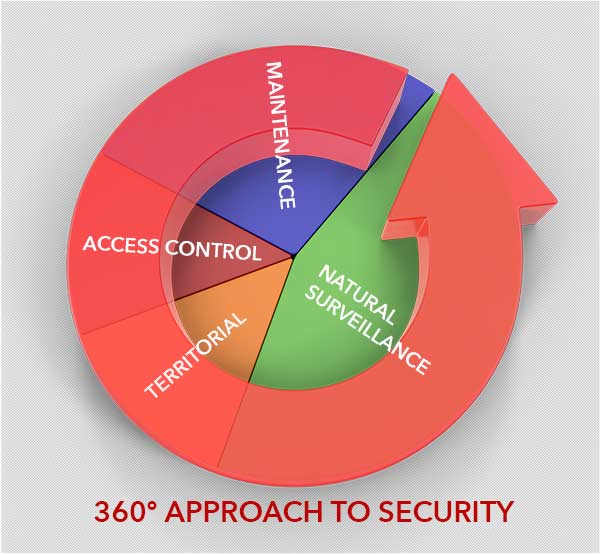Crime Prevention Through Environmental Design (CPTED)

Natural Surveillance:
People must be able to see illegal acts taking place to defend property or prevent crime. Surveillance puts the perpetrator(s) under the threat of being observed, and therefore identified and apprehended.
Territoriality:
Territoriality is all about defining what is public space, what semi-public space is, and what is private space. It involves establishing ownership of areas and can be encouraged by activities and management processes that reduce large impersonal spaces to smaller areas that can be personalized and protected.
Access Control:
This principle relates to territoriality by directing people where to go and denying them access to areas that they do not belong in. This is accomplished through having established vehicle and pedestrian entrances and exits, fencing, door and window locks, access control devices, and appropriate, visible signage.
Maintenance:
Poorly maintained and neglected areas attract unwanted people and activities. Proper maintenance of landscaping, lighting, and other features are essential CPTED principles. A positive community image is a significant deterrent to criminal behavior.


